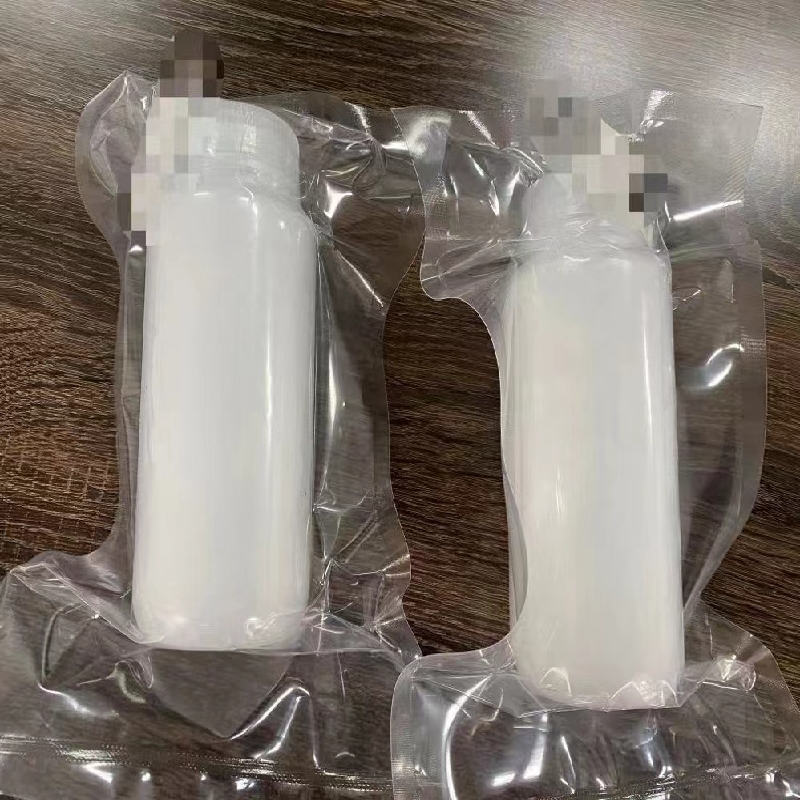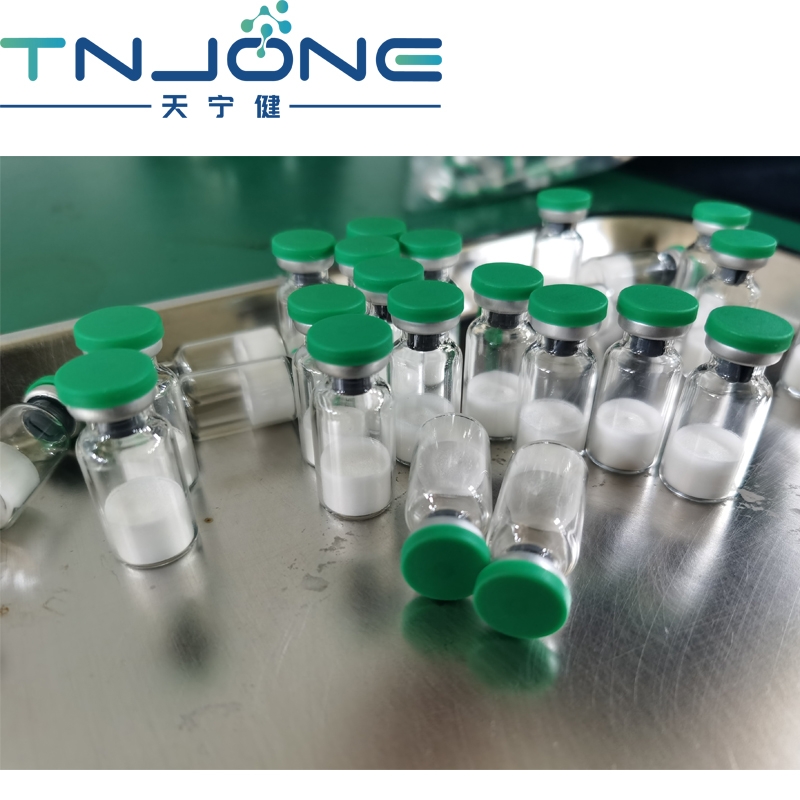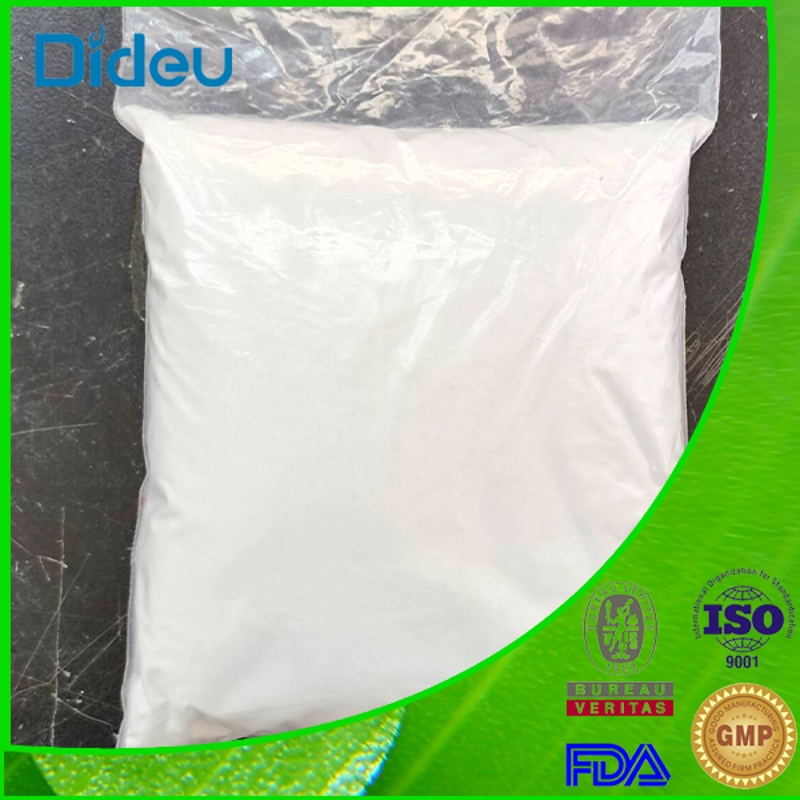-
Categories
-
Pharmaceutical Intermediates
-
Active Pharmaceutical Ingredients
-
Food Additives
- Industrial Coatings
- Agrochemicals
- Dyes and Pigments
- Surfactant
- Flavors and Fragrances
- Chemical Reagents
- Catalyst and Auxiliary
- Natural Products
- Inorganic Chemistry
-
Organic Chemistry
-
Biochemical Engineering
- Analytical Chemistry
-
Cosmetic Ingredient
- Water Treatment Chemical
-
Pharmaceutical Intermediates
Promotion
ECHEMI Mall
Wholesale
Weekly Price
Exhibition
News
-
Trade Service
Responsible editorWhen the body perceives microorganisms or aseptic stimuli, the innate immune receptor NLRP3 is activated to assemble into NLRP3 inflammasomes
.
NLRP3 inflammasome in turn promotes the maturation of IL-1β and IL-18, and cleaves the N-terminal fragments of GSDMD to form pores in the cell membrane, mediating the release of IL-1β and IL-18 to the outside of the cell, causing pyrolysis And inflammation
.
The activation of inflammasomes caused by NLRP3 mutations leads to autoimmune dysfunction, and induces a specific autoimmune inflammatory disease—Cryoporphyrin-associated periodic syndrome (CAPS).
The severity of the disease is closely related to the mutation point of NLRP3
.
Neonatal multi-system inflammatory disease (NOMID) is the most serious type of periodic syndrome associated with cold porphyrin
.
Although IL-1 blocker therapy improves the quality of life of patients in clinical practice, it cannot completely cure the disease.
Long-term medication may induce drug resistance
.
The research group of Dr.
Gabriel Mbalaviele of Washington University in St.
Louis, USA has been committed to researching the pathogenesis of immune inflammatory diseases and new therapeutic targets for more than a decade
.
In order to further study the pathogenesis of NOMID and develop drugs to block the inflammasome signal, the research team used genetic engineering technology to establish an NLRP3 mutant NOMID mouse model (Nlrp3CA/+).
The study found that knocking out GSDMD reduced plasma IL-1β and The level of IL-18 completely reversed the inflammatory symptoms of NOMID mice
.
Recently, researchers such as Dr.
Chun Wang and Dr.
Gabriel Mbalaviele have further studied and discovered a novel GSDMD-independent signaling pathway mediated by inflammasomes
.
The work NLRP3 inflammasome activation triggers gasdermin D-independent inflammation was published online in Science Immunology on October 22, 2021
.
They found that when Nlrp3CA/+;Gsdmd−/− mice or cells are treated with inflammatory stimuli such as lipopolysaccharide (LPS) or TNF-α, they still secrete large amounts of IL-1β and IL-18, and pyrolysis occurs.
These results indicate The GSDMD-independent effects of NLRP3 inflammasomes are described
.
Further study of the mechanism found that in the absence of GSDMD, the activation of the NLRP3 inflammasome triggers the Caspase-8/-3 pathway, which cuts another member of the GSDM family, GSDME
.
Gsdme−/− prevented the secretion of inflammatory factors and pyrolysis in Nlrp3CA/+;Gsdmd−/− mice or cells, indicating that the cleaved GSDME fragment mediates the downstream inflammasome signaling pathway
.
The study also found that an active metabolite of disulfiram (Disulfiram), copper bisdiethyldithiocarbamate (CuET), can simultaneously inhibit the cleavage of GSDMD and GSDME and the activation of inflammatory bodies , Protecting NOMID mice from pathological damage
.
This work is the first to find that in addition to GSDMD, GSDME can also mediate the release of IL-1β and IL-18
.
Importantly, CuET can inhibit the inflammatory factors mediated by both
.
Last year, the Harvard University Judy Lieberman's research group reported that Disulfiram inhibits GSDMD from forming small holes and pyrolysis in cell membranes.
The results of the study were published in Nat Immunol
.
It is hoped that the discovery of the new mechanism of action of this drug will bring new light to patients with intractable autoinflammatory diseases
.
Original link: https:// Platemaker: Notes for reprinting on the 11th [Non-original article] The copyright of this article belongs to the author of the article.
Personal forwarding and sharing are welcome.
Reprinting without permission is prohibited.
The author has all legal rights, and offenders must be investigated
.
.
NLRP3 inflammasome in turn promotes the maturation of IL-1β and IL-18, and cleaves the N-terminal fragments of GSDMD to form pores in the cell membrane, mediating the release of IL-1β and IL-18 to the outside of the cell, causing pyrolysis And inflammation
.
The activation of inflammasomes caused by NLRP3 mutations leads to autoimmune dysfunction, and induces a specific autoimmune inflammatory disease—Cryoporphyrin-associated periodic syndrome (CAPS).
The severity of the disease is closely related to the mutation point of NLRP3
.
Neonatal multi-system inflammatory disease (NOMID) is the most serious type of periodic syndrome associated with cold porphyrin
.
Although IL-1 blocker therapy improves the quality of life of patients in clinical practice, it cannot completely cure the disease.
Long-term medication may induce drug resistance
.
The research group of Dr.
Gabriel Mbalaviele of Washington University in St.
Louis, USA has been committed to researching the pathogenesis of immune inflammatory diseases and new therapeutic targets for more than a decade
.
In order to further study the pathogenesis of NOMID and develop drugs to block the inflammasome signal, the research team used genetic engineering technology to establish an NLRP3 mutant NOMID mouse model (Nlrp3CA/+).
The study found that knocking out GSDMD reduced plasma IL-1β and The level of IL-18 completely reversed the inflammatory symptoms of NOMID mice
.
Recently, researchers such as Dr.
Chun Wang and Dr.
Gabriel Mbalaviele have further studied and discovered a novel GSDMD-independent signaling pathway mediated by inflammasomes
.
The work NLRP3 inflammasome activation triggers gasdermin D-independent inflammation was published online in Science Immunology on October 22, 2021
.
They found that when Nlrp3CA/+;Gsdmd−/− mice or cells are treated with inflammatory stimuli such as lipopolysaccharide (LPS) or TNF-α, they still secrete large amounts of IL-1β and IL-18, and pyrolysis occurs.
These results indicate The GSDMD-independent effects of NLRP3 inflammasomes are described
.
Further study of the mechanism found that in the absence of GSDMD, the activation of the NLRP3 inflammasome triggers the Caspase-8/-3 pathway, which cuts another member of the GSDM family, GSDME
.
Gsdme−/− prevented the secretion of inflammatory factors and pyrolysis in Nlrp3CA/+;Gsdmd−/− mice or cells, indicating that the cleaved GSDME fragment mediates the downstream inflammasome signaling pathway
.
The study also found that an active metabolite of disulfiram (Disulfiram), copper bisdiethyldithiocarbamate (CuET), can simultaneously inhibit the cleavage of GSDMD and GSDME and the activation of inflammatory bodies , Protecting NOMID mice from pathological damage
.
This work is the first to find that in addition to GSDMD, GSDME can also mediate the release of IL-1β and IL-18
.
Importantly, CuET can inhibit the inflammatory factors mediated by both
.
Last year, the Harvard University Judy Lieberman's research group reported that Disulfiram inhibits GSDMD from forming small holes and pyrolysis in cell membranes.
The results of the study were published in Nat Immunol
.
It is hoped that the discovery of the new mechanism of action of this drug will bring new light to patients with intractable autoinflammatory diseases
.
Original link: https:// Platemaker: Notes for reprinting on the 11th [Non-original article] The copyright of this article belongs to the author of the article.
Personal forwarding and sharing are welcome.
Reprinting without permission is prohibited.
The author has all legal rights, and offenders must be investigated
.







